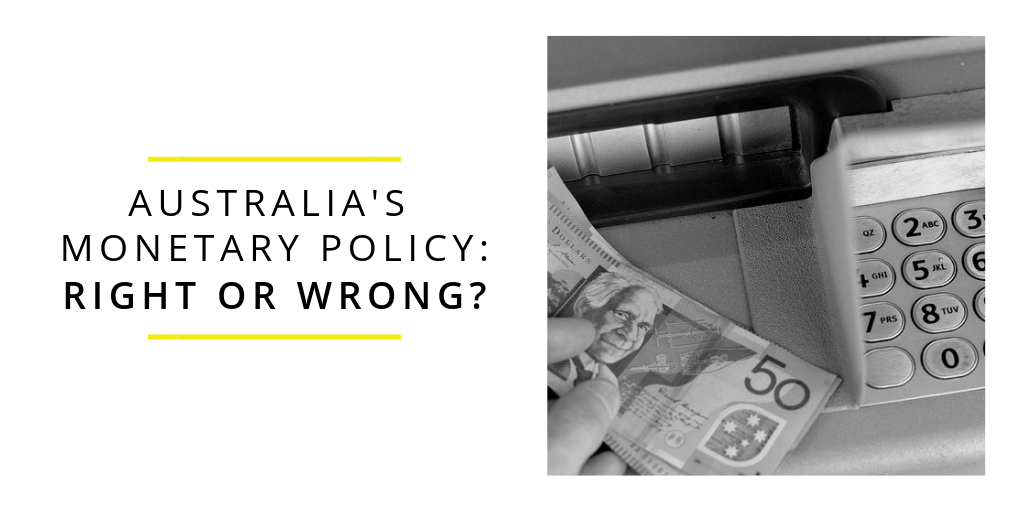February 16, 2010
Australia’s Monetary Policy: Right or Wrong?

The International Monetary Fund (IMF) came out this week and claimed that Australia (as well as a number of other Western countries including New Zealand, Canada & the UK) has been getting it wrong when it comes to our inflation targeting approach to monetary policy.
In economies that use an inflation-targeting approach to monetary policy, central banks will adjust the official cash rate in order to help keep inflation within a “normal” range. The argument from the IMF is that in order to give more policy “room” during downturns, we need to set a higher inflation target.
In Australia, the Reserve Bank uses an inflationary range of 2-3% as its guide when making monetary policy decisions. The RBA will thus use interest rates in order to slow an overheating economy (by raising the cash rate) or to pick up a slowing economy (by cutting rates).
However, Australia has one of the more liberal approaches in the world already, with most other countries targeting an inflationary range of between 1-2%.
Given the fact that Australia rode out the global recession far better than most others, one might argue that the IMF is on to something. Interestingly, the IMF also claimed that cash handouts, like those given out by the Rudd Government, should also be one of the first actions made in a downturning economy.
So whilst right now it looks like Australia has handled the downturn far better than most, the question will be how do we handle the inevitable upswing?
Two to three years ago, the story was completely different. Australia’s economy was still humming along nicely, and inflation was well above the targeted range.
As a result, the RBA continued to lift interest rates in an attempt to control it. However, around this time, there were strong calls that Australia’s economic inflation was being driven up by international pressures, like the price of oil, not domestic ones.
This lead to calls for the RBA to ignore what was deemed “imported inflation,” as domestic monetary policy decisions were unlikely to affect global sentiment.
Despite this, interest rates continued to be lifted, and when the world went into meltdown the RBA had no choice but to start slashing at the official cash rate, a move that most likely did more harm than good.
Having said all this, it does appear that the RBA has learnt some lessons from recent times, as they seem less inclined to tamper with the currency’s value (as this puts upward pressure on inflation) and have also assessed how the big banks respond to cash rate increases.
Food for thought…
Tags: Australian Economy

